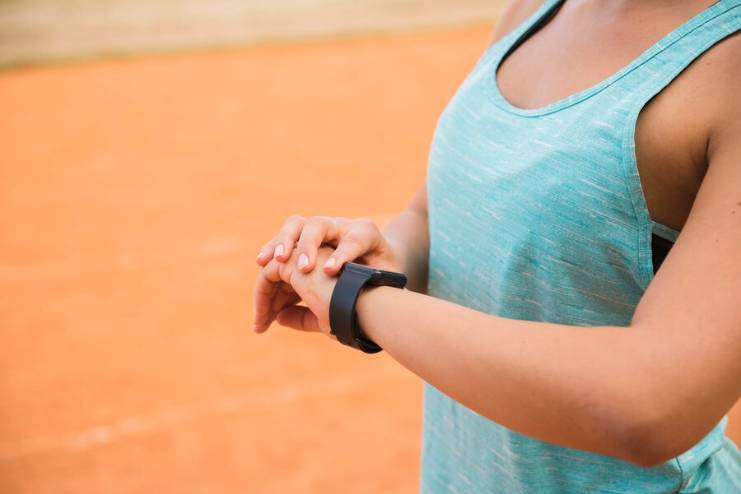Affiliate Disclaimer
Some links in this article are affiliate links. We may earn a small commission if you make a purchase through these links, at no extra cost to you. We only recommend products we find useful to our readersDiabetes is either hereditary or lifestyle-induced. Research says that 1 out of 3 people are pre-diabetic, and they are not even aware of it. 29.1 million people in the United States alone suffer from this disease. But can walking be a potential treatment for diabetes?
Here, we are going to be review some of the benefits of walking for diabetes, along with a whole lot of insights that will come in handy for you.
Benefits of Walking For Diabetes
The benefits of walking for diabetes are profound. Not only does it help regulate blood sugar levels, but it is also quite beneficial in maintaining other issues that diabetics often face in the long run.
Check These Benefits And Tips For Walking During Diabetes
-
Regulates Glucose Levels

One of the most important benefits of walking for diabetes is that it directly impacts the overall glucose levels in the body. The imbalanced levels of glucose and the inefficiency of the insulin in the bloodstream are accountable for the onset of the disease.
Walking helps in better absorption of glucose (R) into the bloodstream, and prevents the glucose from accumulating in the bloodstream.
When the levels of blood glucose are regulated, it helps keep the condition in check. The impacts of walking often last for hours or even days, which is why it is important to make a habit.
-
Improves Insulin Sensitivity
Another benefit is that it helps improve insulin sensitivity (R).
Studies have shown beneficial impacts in the prevention as well as a possible treatment for insulin resistance (R), which is one of the primary reasons behind diabetes.
Maintaining proper insulin function in the body is key to regulation of the condition and walking is an effective way to achieve the same.
Not only does it help keep the cells in the body active, but it is also crucial in boosting the overall pancreatic functions and stimulation to ensure proper secretion of insulin whenever it is required.
-
Regulation Of Cholesterol Levels

Cholesterol is possibly one of the worst enemies a diabetic patient. One of the most common causes behind the lack of progress in the treatment for diabetes is uncontrolled cholesterol levels and obesity.
High cholesterol levels are quite common in people who have diabetes. The prevalence of bad cholesterol in the body often tends to inflict negative impacts on one’s health, especially affecting cardiovascular functioning.
Walking helps in combating the unprecedented levels of cholesterol (R) in the body, thereby helping in ensuring better overall health.
-
Reduces Stress

If you are someone who has been consistently witnessing signs of stress, chances are that you may also have higher risks of developing diabetes.
The higher levels of cortisol are often the primary reason behind the altered functions of the body. It is believed that the high levels of cortisol in the body impact the hepatic responsiveness to the secreted insulin from the pancreatic beta cells.
Persistent psychological stress induces higher levels of cortisol (R), which keeps the body in a fight or flight mode, thereby causing issues relating to the induction of insulin resistance followed by diabetes.
Walking helps in keeping stress levels in check and prevents the possibility of developing higher levels of cortisol in the blood, ensuring to keep the diabetes in check as well.
Tips to Remember
Diabetes is not a simple condition. There are a number of factors that influence the overall condition, and even the disease itself is potent enough to induce varying alterations in the body.
In order to keep everything in check, walking is a must-do.
Before getting yourself on a schedule, there are a few tips that one needs to make note of.
1. Make it a Habit

As mentioned before, if you wish to keep your glucose levels in check, it is important to ensure that you make walking a daily habit.
If you are planning on walking 30 minutes every morning after waking up, make sure to do so on a regular basis.
Initially, start with a 30-day challenge for yourself of walking 4-5 times a week and then work your way up from there. Don’t overexert, and do it within your limits.
2. Choosing The Correct Shoe

If you are a diabetic, chances are that your doctor has already walked you through the importance of foot hygiene (R) for better health.
Preventing any kind of blistering or wounds around the feet is important. The main reason behind the same is that it slows down the healing process altogether.
It’s crucial to choose your shoes carefully. Don’t go for cheap and low-quality shoes. Instead, splurge and get comfortable and good-quality walking shoes.
3. Keep Checking Blood Glucose Levels

It is important to keep track of the blood glucose levels in the body before you start your walking regime. This is because high blood glucose levels can inflict negative impacts on the body.
If your blood glucose levels are too low, it is suggested to consume 10-30 grams of carbs to stabilize it. Make sure the levels are brought back to normal before you go for a walk.
For someone whose blood glucose levels are at a peak, it is suggested to skip the walk until the levels come back to normal again.
Check the blood glucose levels every once or twice a week before walking and keep a track of the same.
4. When to Walk

But when is it best to go out for a walk?
For best results, it is suggested to walk for at least 30 minutes after a meal because that’s when the insulin and the blood sugar levels might settle down.
Also, opting for a 30-minute walk in the morning helps prevent the insulin peak.
Deciding a time for walking is quintessential because it helps in following through a routine which is important to keep the glucose levels in the body in check.
5. Keep Yourself Hydrated

Dehydration is often an issue. The amount of sweat one disperses out may dehydrate one if this isn’t taken care of.
Make sure to drink one glass of water an hour before you start. If possible, you can also try a good sports drink that doesn’t contain added sugars and carbs.
6. Carry Snacks

Irrespective of your sugar levels when you start your walk, it is important to always carry some snacks for the safe side.
When your sugar levels drop drastically while walking, these snacks will save you. If you feel like your sugar levels are dropping, you can simply just pop one or two of them in your mouth to stabilize the sugar levels back again. Besides, it is suggested to consume more carbs than normal after a walk.
7. Beware of Signs of Hypoglycemia

It is crucial to understand the signs of hypoglycemia on time to ensure that your levels of blood glucose are in check. While walking, keep an eye on your body. If you don’t feel good and still continue walking, you may end up worsening things.
Look out for some of the common symptoms of hypoglycemia, like drowsiness, weakness, confusion, hunger, and even a cold and clammy feeling.
How Much Walking Is Optimal For Diabetes?

One of the most important things to know is how much walking is optimum. Overexertion in any prospect doesn’t do anyone good.
Often, the walking goal can be just 30 minutes in the morning. Make sure you are walking 20 minutes briskly and then taking a few minutes to pause and start it all over again. Ideally, the speed of walking should be around 3-4 mph.
Conclusion
Walking can help with blood sugar management and has many more benefits beyond that. From improving insulin sensitivity and reducing stress to regulating cholesterol, there are a host of different ways regular walks can boost your overall health.
Picking appropriate footwear and watching both blood glucose levels and how much water you drink are all needed steps. Make walking a consistent habit, and take a step in the right direction in controlling diabetes and living life to the fullest. Be sure to check with your healthcare provider about the appropriate level of exercise for your condition before beginning any new exercise program.
-
Feb 2019Written by Somapika D
-
Sep 2024Edited by Lakshmi Gayatri
In this Article






















